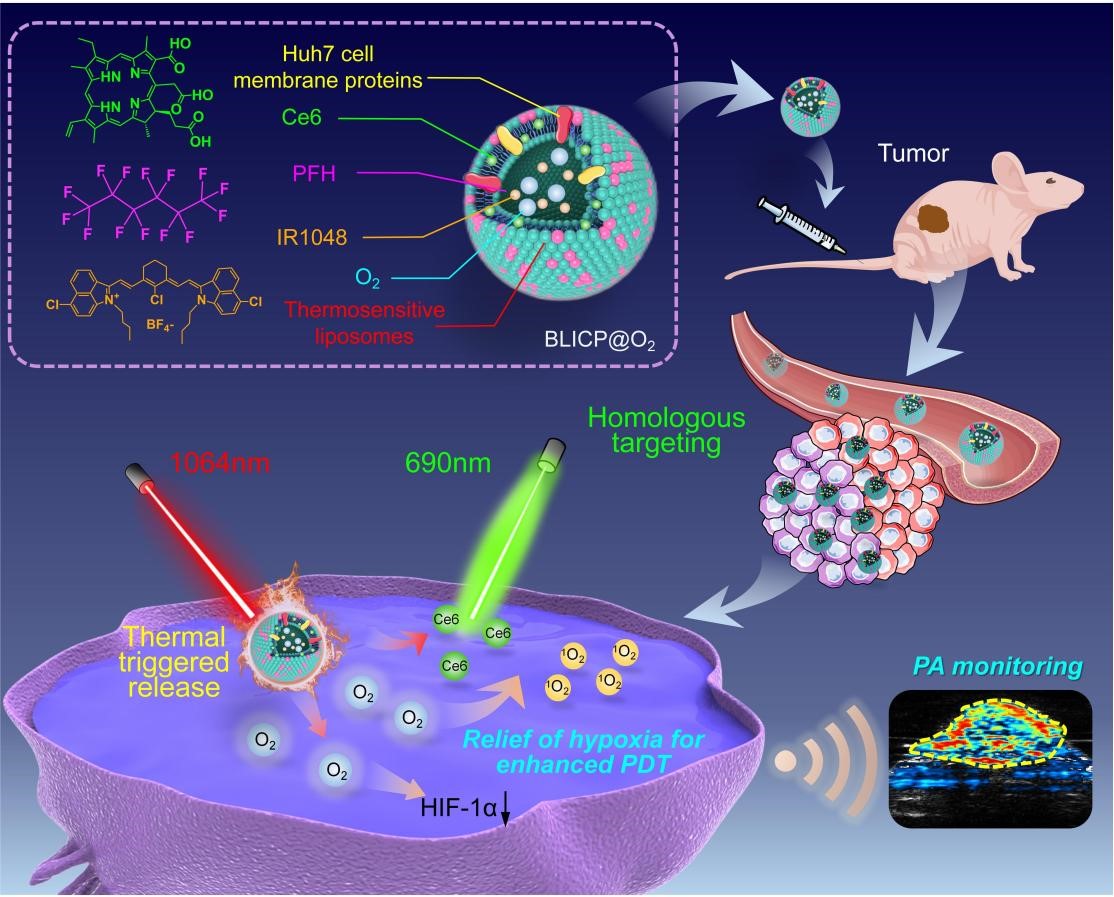Revolutionizing HCC Treatment: Novel Photoacoustic Imaging Guides Enhanced Photodynamic Therapy
Date:12-12-2023 | 【Print】 【close】
A collaborative research effort led by Prof. LIU Chengbo from the Shenzhen Institute of Advanced Technology (SIAT) of the Chinese Academy of Sciences and Prof. FANG Chihua from Zhujiang Hospital, Southern Medical University, has introduced an innovative theranostic strategy utilizing NIR-Ⅱ photoacoustic (PA) imaging guidance and a dual-wavelength programmed cascaded treatment approach. This strategy aims to achieve precise oxygen delivery and controlled release, resulting in enhanced efficacy of photodynamic therapy (PDT) for hepatocellular carcinoma (HCC).
The study, published in Advanced Materials on Nov. 20, addresses the challenge of tumor hypoxia, a common characteristic of solid tumors and a significant obstacle in achieving successful outcomes in PDT for HCC. The research team overcame this challenge by developing a biomimetic oxygen delivery system named BLICP@O2.
In this system, oxygen release is controlled through near-infrared-Ⅱ (NIR-Ⅱ) 1064 nm photothermal triggering, effectively mitigating tumor hypoxia. Subsequently, 690 nm laser irradiation is employed to generate singlet oxygen, intensifying PDT to target and eliminate the tumor. The use of multi-spectral PA imaging technology plays a pivotal role in monitoring real-time fluctuations in blood oxygen levels in the tumor area, offering immediate feedback on the tumor's hypoxic condition.
Experimental results validated the outstanding in vivo and in vitro biostability and biocompatibility of BLICP@O2. When combined with a dual-wavelength programmed cascaded treatment strategy, it exhibited remarkable photothermal and photodynamic effects, precisely targeting tumor cells and enhancing therapeutic efficacy. Notably, in vivo experiments on tumor-bearing mice, monitored through PA imaging, demonstrated efficient controlled oxygen release in the tumor region and an improved efficacy of PDT against HCC, leading to the inhibition of tumor growth.
This work holds promise for opening new avenues and opportunities in future clinical settings for the treatment of HCC.

Schematic illustration of PA imaging-guided oxygen delivery and controlled release to improve PDT for HCC. (Image by SIAT)
Media Contact:
ZHANG Xiaomin
Email:xm.zhang@siat.ac.cn